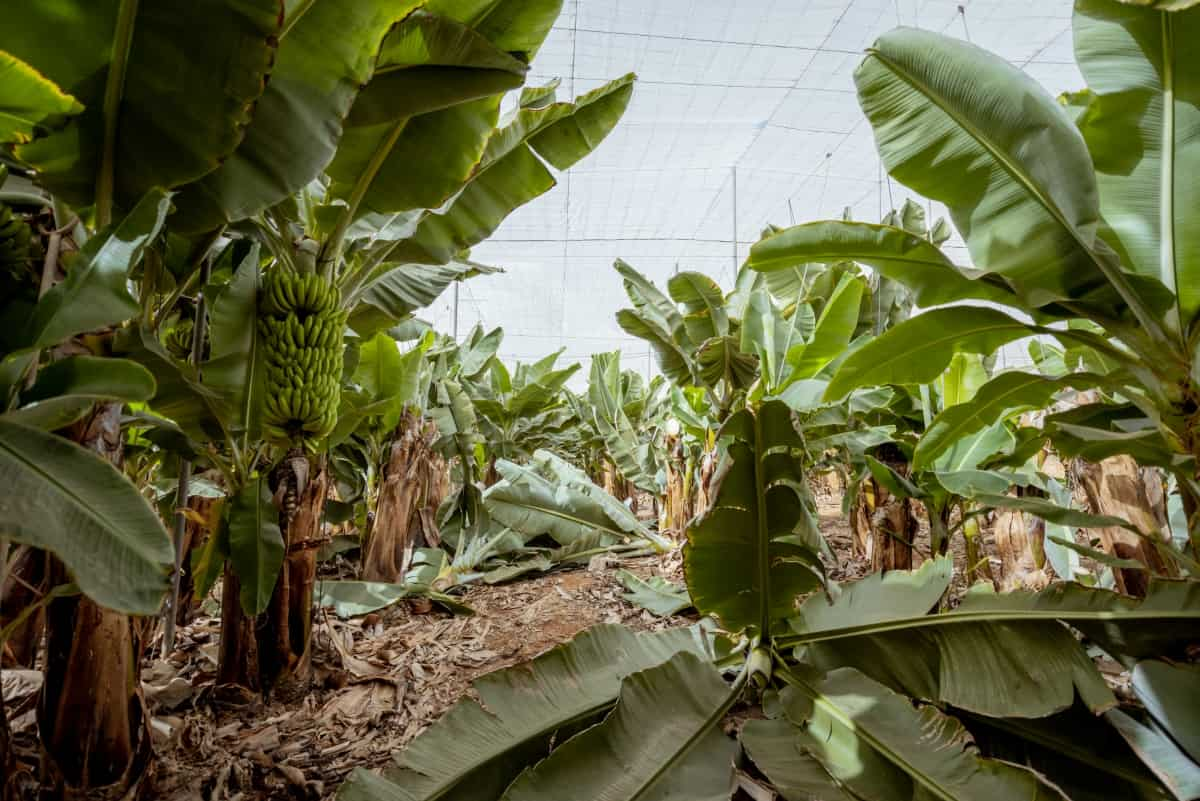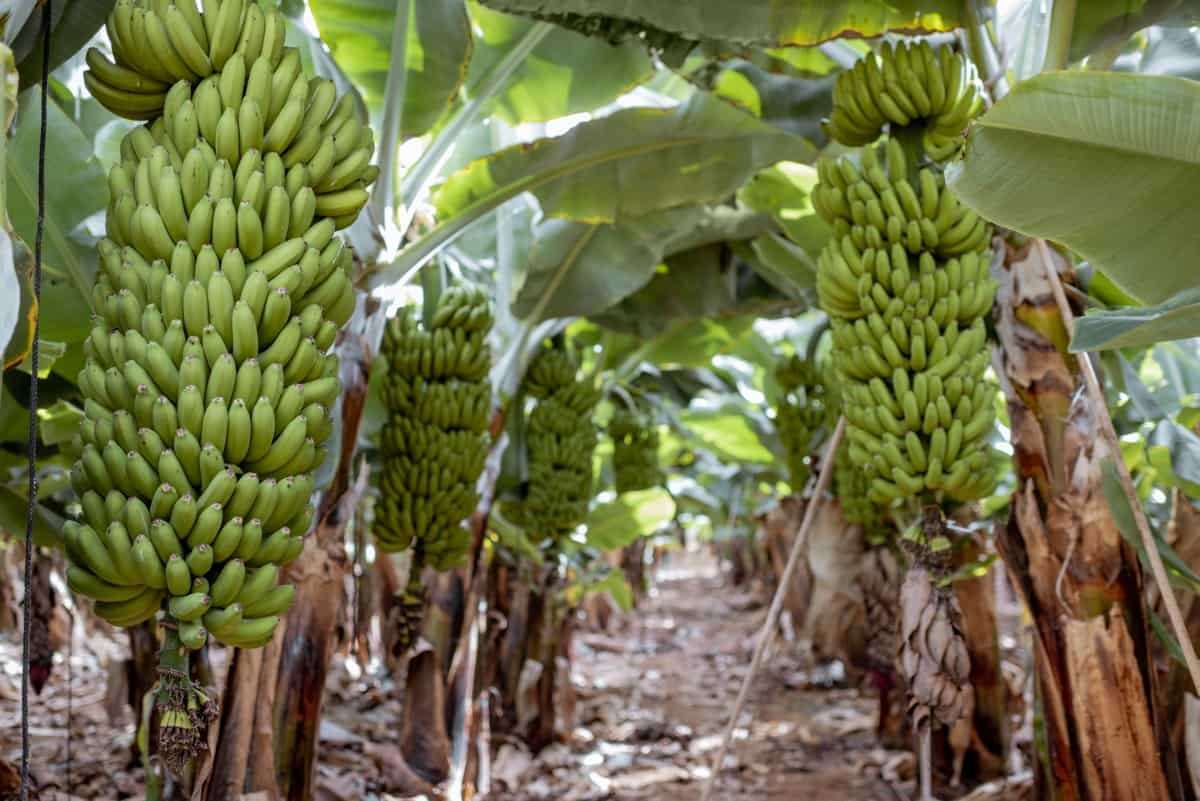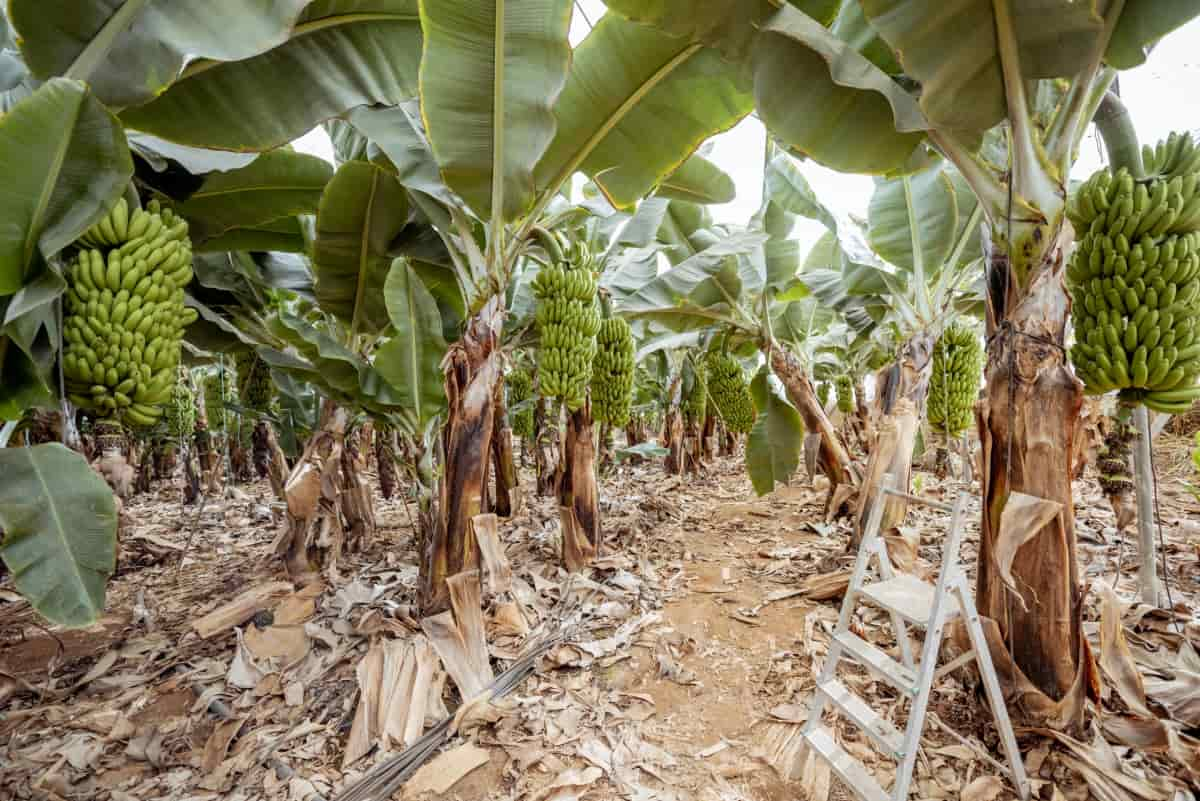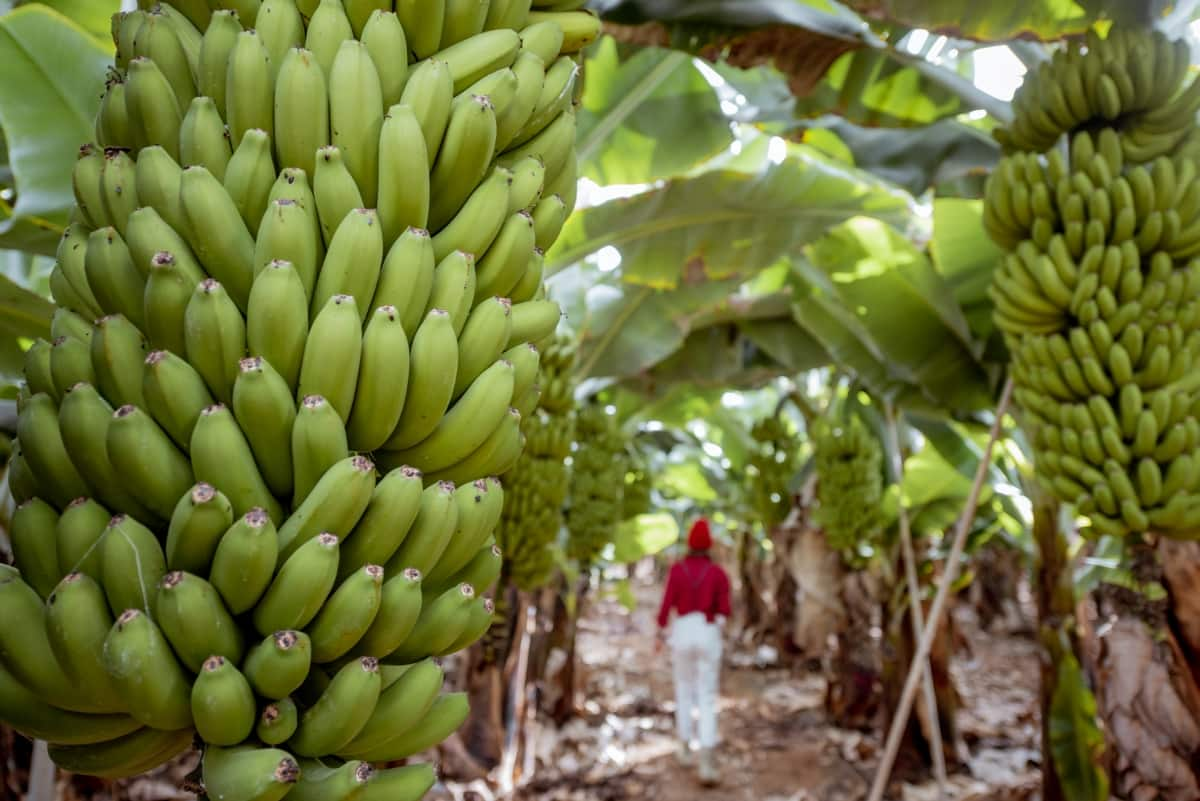Pruning and de-leafing are crucial techniques in banana cultivation for maximizing yield. Pruning involves removing excess suckers and focusing plant energy on fruit production. Deleafing entails removing older, diseased, or unnecessary leaves improving air circulation and light exposure for healthier growth.

These practices enhance nutrient utilization, reduce disease risks, and facilitate efficient harvesting. By maintaining an optimal balance of foliage and fruit, pruning and de-leafing contribute to larger, healthier bananas and increase overall yield. Additionally, they help manage pests and diseases, ultimately ensuring a more robust and sustainable banana production process.
How to Increase Banana Yield with Pruning
The Benefits of Pruning and Deleafing in Maximizing Banana Production
Pruning and leaf removal are vital techniques for optimizing banana production. Pruning eliminates unwanted leaves, channeling the plant’s energy into fruit development. Deleafing involves the removal of older or diseased leaves, promoting better light penetration and air circulation.
These practices enhance nutrient allocation, reduce disease susceptibility, and facilitate easier harvests. By maintaining an ideal foliage-to-fruit ratio, pruning and leaf removal foster larger, healthier bananas, resulting in increased yields. They also aid in pest and disease management, contributing to a more efficient and sustainable banana cultivation process.
Step-By-Step Guide to Pruning and Deleafing Techniques for Increased Banana Yield
- Evaluate the Plant: Start by assessing the banana plant to identify unhealthy or unnecessary leaves.
- Select Pruning Tools: Use sharp and clean pruning shears or a machete to make precise cuts.
- Prune Unwanted Shoots: Remove excess and unproductive leaves, leaving the main pseudostem intact. Focus on removing suckers, water shoots, and any damaged or diseased growth.
- Deleafing: Carefully remove older or yellowing leaves, especially those near the bottom of the plant. Leave the top healthy leaves intact.
- Sanitize Tools: Clean your pruning tools to prevent the spread of diseases.
- Dispose of Debris: Properly dispose of pruned material to prevent disease transmission and insect infestations.
- Maintenance: Repeat these steps periodically to maintain an optimal foliage-to-fruit ratio and encourage higher banana yields.
Best Practices for Pruning and Deleafing Banana Plants for Optimal Growth
- Timing: Prune and deleaf during the early growth stages to minimize stress on the plant.
- Sanitation: Use clean, sharp tools to prevent disease transmission.
- Selective Cutting: Remove excess shoots, water sprouts, and damaged leaves while retaining healthy growth.
- Maintain Balance: Maintaining a balance between foliage and fruit allows the plant to channel energy efficiently.
- Top Leaves: Keep the top leaves to support photosynthesis and overall plant health.
- Regular Maintenance: Periodically revisit pruning and de-leafing to ensure continued, optimal growth and maximize banana production.
How to Identify the Right Time for Pruning and Deleafing Banana Trees
The ideal time for pruning and de-leafing banana trees is when the plant is in its active growing phase. Look for signs such as excessive sucker growth, yellowing or damaged leaves, or when the plant reaches a height of about 6-8 feet. Typically, this is done during the warmer months when the banana tree is actively producing. Avoid pruning during colder or dormant periods. Regular monitoring and adjustment of pruning and de-leafing schedules will help maintain an optimal balance for maximizing banana yield.
In case you missed it: Best Practices for Banana Planting and Spacing: Various Banana Planting Methods

Tools and Equipment Required for Effective Pruning and Deleafing of Banana Plants
- Pruning Shears or Machete: Clean, sharp tools for making precise cuts.
- Gloves: To protect your hands from cuts and potential skin irritation.
- Sanitizing Solution: For disinfecting tools and preventing disease spread.
- Ladder or Stool: To reach taller plants and facilitate safe access.
- Trash Bags or Containers: To collect and dispose of pruned material hygienically.
- Protective Clothing: Long sleeves and pants to shield against scratches and exposure to plant fluids.
- Eye Protection: Safety glasses for safety around sharp tools and plant debris.
Common Mistakes to Avoid When Pruning and Deleafing Banana Trees
- Over-pruning: Avoid removing too many leaves, which can hinder photosynthesis and reduce fruit production.
- Neglecting sanitation: Failing to clean and disinfect tools between cuts can spread plant diseases.
- Pruning during dormancy: Pruning during the colder months can harm the plant’s growth and health.
- Removing healthy leaves: Keep the top healthy leaves for optimal growth.
- Inadequate safety measures: Neglecting protective gear can lead to injuries from sharp tools and plant debris.
- Irregular maintenance: Consistency in pruning and de-leafing is essential for sustained banana tree health and yield.
The Role of Pruning and Deleafing in Disease Prevention and Pest Control for Bananas
Pruning and de-leafing are crucial in disease prevention and pest control for banana plants. Removing diseased or damaged leaves and excess foliage enhances air circulation and light exposure, creating an environment less favorable for fungal pathogens and pests. This practice reduces moisture retention, a common factor in disease development.
In case you missed it: Different Methods of Banana Propagation: Exploring Various Techniques

Additionally, eliminating hiding places and breeding grounds for insects, such as thrips and aphids, helps control pest infestations. Pruning also allows for better monitoring of the plant’s health, enabling early detection of diseases and timely intervention, ultimately contributing to a healthier and more disease-resistant banana crop.
Techniques for Pruning and Deleafing Different Varieties of Banana Plants
- Dwarf Varieties: Prune away excessive suckers and deleaf selectively, keeping the top leaves for photosynthesis.
- Tall Varieties: Trim away dead or diseased leaves but avoid heavy pruning, as these varieties rely on more leaves for growth.
- Plantain Varieties: Prune suckers close to the main pseudostem and remove lower leaves to prevent pests and diseases.
- Cavendish Varieties: Trim away older leaves and maintain a balance between foliage and fruit for optimal yield.
Evaluating the Impact of Pruning and Deleafing on Fruit Quality and Size in Bananas
Pruning and de-leafing significantly influence fruit quality and size in bananas. By removing excess foliage and focusing the plant’s energy on fruit production, these practices enhance fruit size, resulting in larger and more appealing bananas. Moreover, improved air circulation and exposure to sunlight reduce fungal diseases and pest risk, ensuring healthier and blemish-free fruits.
In case you missed it: How to Prepare the Land for Banana Plantation: Soil Requirements and Preparation Steps

As a result, the fruits are visually appealing and have better taste and texture. Pruning and de-leafing are essential for optimizing fruit quality and size, ultimately increasing banana crops’ market value and desirability.
Conclusion
In conclusion, pruning and de-leafing techniques are indispensable tools for boosting banana yields. They optimize the plant’s energy allocation, enhance fruit quality, and mitigate disease risks. By maintaining a harmonious balance between foliage and fruit, these practices not only increase production but also lead to healthier, more marketable bananas. When executed correctly, pruning and de-leafing contribute to a more sustainable and profitable banana cultivation process.
- Feed Your Flock for Less: Top 10 Tips to Save on Chicken Feed
- Ultimate Guide to Ossabaw Island Hog: Breeding, Raising, Diet, and Care
- Hatching Answers: The Top 10 Reasons Your Chickens Aren’t Laying Eggs
- Eggs and Economics: Breaking Down the Cost of Raising Backyard Chickens
- Defend Your Greens: Proven Methods to Keep Iguanas Out of Your Garden
- Ultimate Guide to Cinnamon Queen Chicken: A Comprehensive Guide for Beginners
- Ultimate Guide to California Tan Chicken: Breeding, Raising, Diet, Egg-Production and Care
- Ultimate Guide to Marsh Daisy Chicken: Breeding, Raising, Diet, and Care
- 10 Types of Chicken Farming Businesses You Can Start for Profits